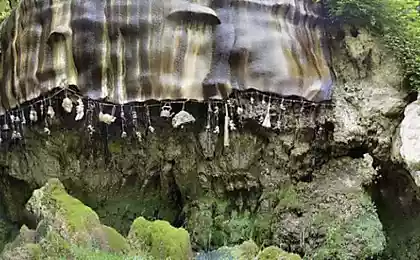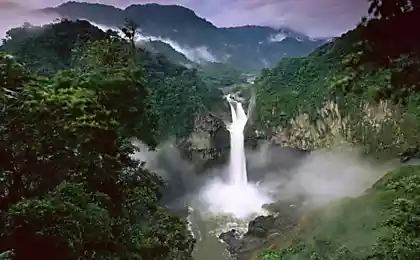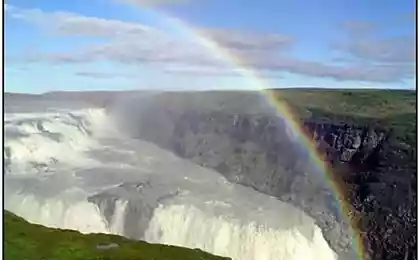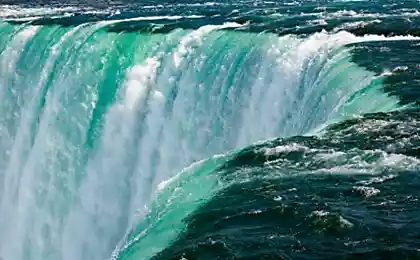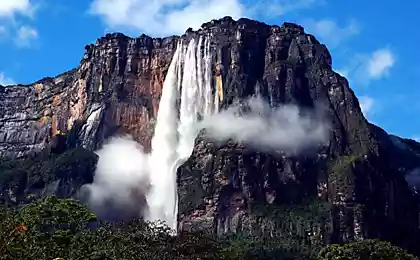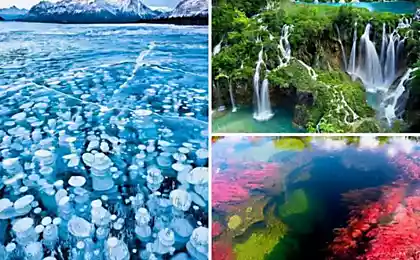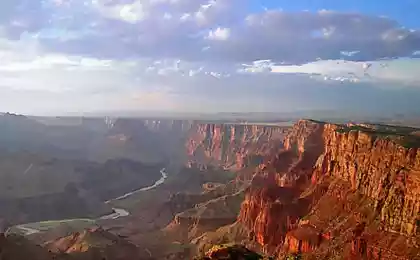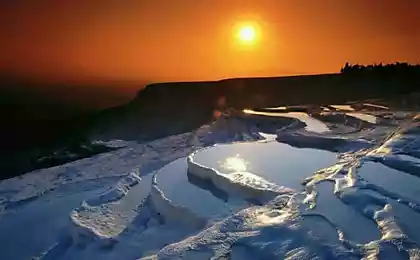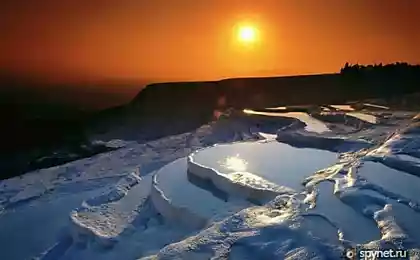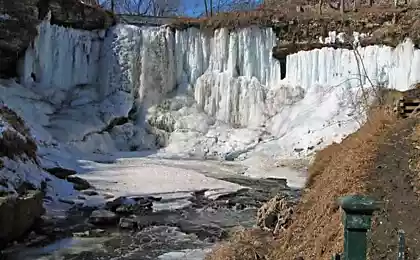655
Photo— Iguazu waterfalls
Iguazu falls is huge complex of waterfalls, located at the junction of the States of Brazil (Parana state) and Argentina (province of Misiones), at the intersection of the rivers Parana and Iguazu. They are spread on the territory adjacent to each other of the same national parks (Brazilian and Argentinean). The complex has a Crescent shape, consists of many waterfalls, the number of which depending on the time of year and the water pressure can reach 275.
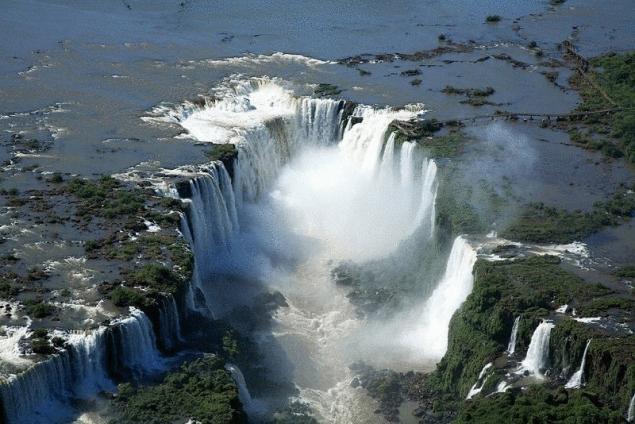
At the world competition, held on 11 November 2011, Iguazu was awarded the title of one of the seven natural wonders of the world.
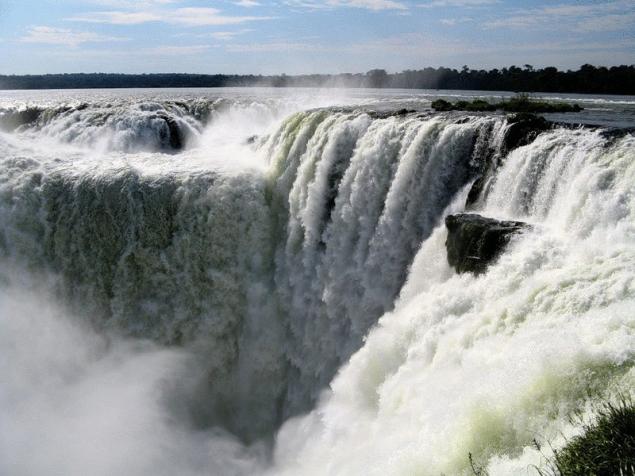
The falls were formed after a strong volcanic eruption, which in the ground formed a large crevice. Age of basalt deposits, formed due to solidification of lava that is about 130-140 million years.
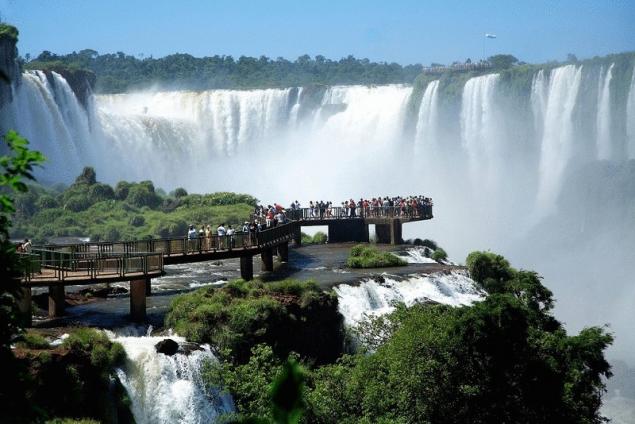
The name of the waterfalls, Iguacu (Iguazu) – comes from two words of the Guarani language, which means “big water”.
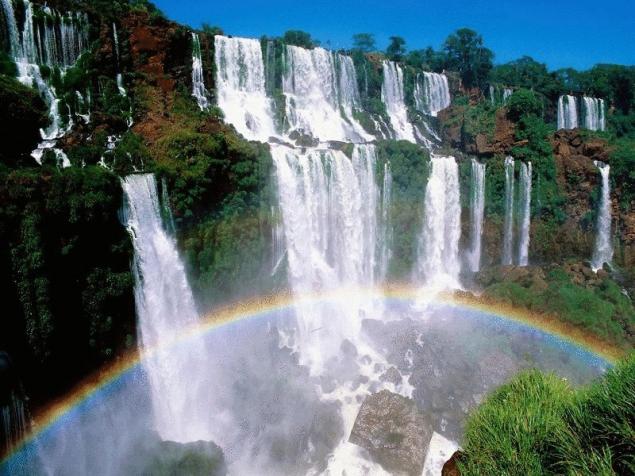
The first inhabitants of these territories are considered to be tribes, kaingang and Guarani, this is confirmed by the archaeological objects found in the area. Europeans learned about the majestic waterfalls by Spanish Conquistador Cabeza de Vaca who was the first to set foot on this land, where we saw a fascinating natural creation. It happened in 1541, when the Spaniard travelled through the South American jungle, upstream of the paraná river, in search of the famed treasures of the mythical country of El Dorado.
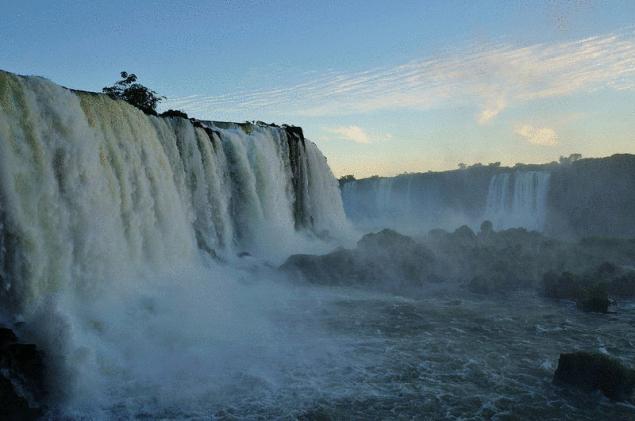
Different tribes living in these places, legends associated with the emergence of the Iguazu falls. One of them says that God chose as the chosen one, the beautiful aboriginal Naipu, but she did not share his feelings, and loved another, with whom he sailed away from these places in a canoe. God was so angry that cut the river, creating many waterfalls, condemning the star-crossed lovers to an eternal fall.
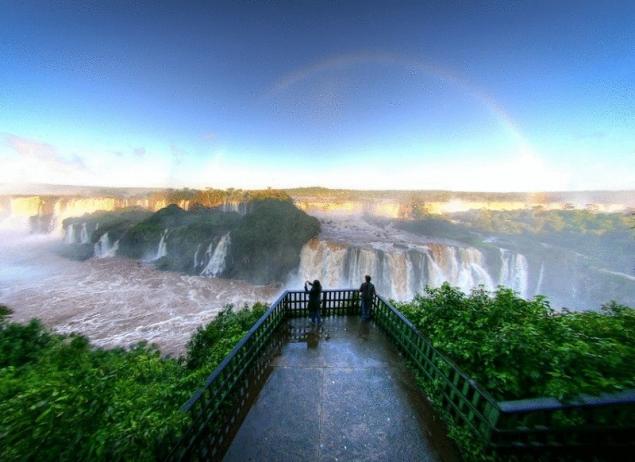
The Iguazu waterfalls are formed near the place where the eponymous river, taking their sources near the Atlantic coast of Brazil, merges with the Parana river. Rattling the flows extend along the flow of the river almost 3 kilometers. Falling off a cliff, the water falls into the basin, which lies 82 meters below, but the height of most of the waterfalls is about 60 meters. The largest waterfall complex – “devil's Throat” is a horseshoe-shaped cliff with a length of 700 and a width of 150 meters:
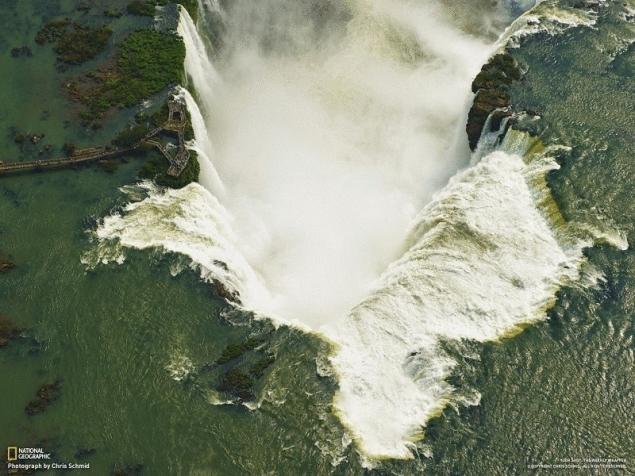
This waterfall serves as a natural border between Argentina and Brazil. The rocky terrain between waterfalls, lush diverse vegetation.
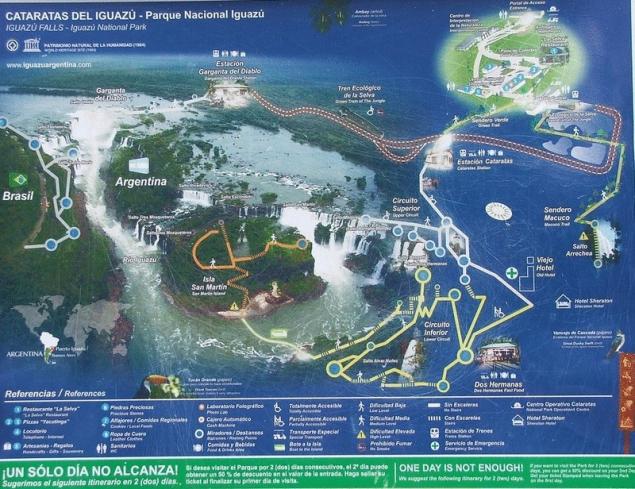
Top view from the Brazilian side: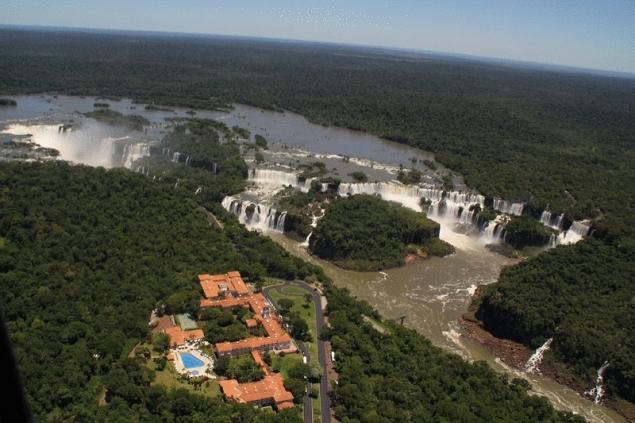
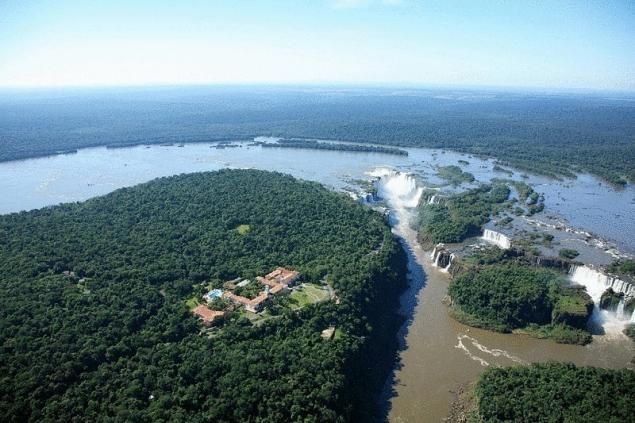
During the rainy season from November to March in the local area receives about 2000 mm of precipitation. In the period of the dry season when the water level in the river Iguazu is significantly reduced, instead of a continuous ridge jets are formed two separate falls, the width of each of which is about 730 meters. After approximately forty years of a powerful waterfall dries up, turning into a basalt ledge. In 1978 a period of severe drought, the river began to dry up, resulting in Iguazu idle for a month.
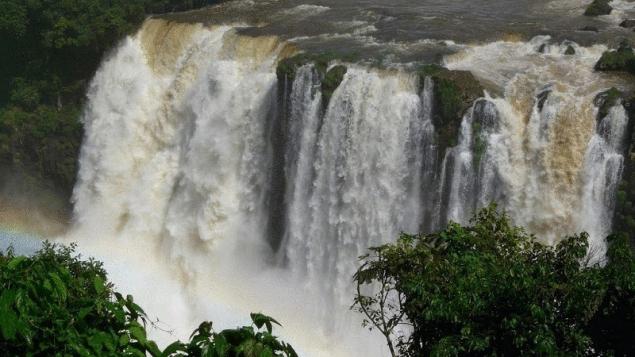
In addition to the powerful beauty themselves Iguazu falls, here you can see another beautiful sight – a shimmering rainbow, which varies depending on the position of the sun and the height of the waterfall. During the full moon, when the air and water mist over the falls night rainbow is formed.
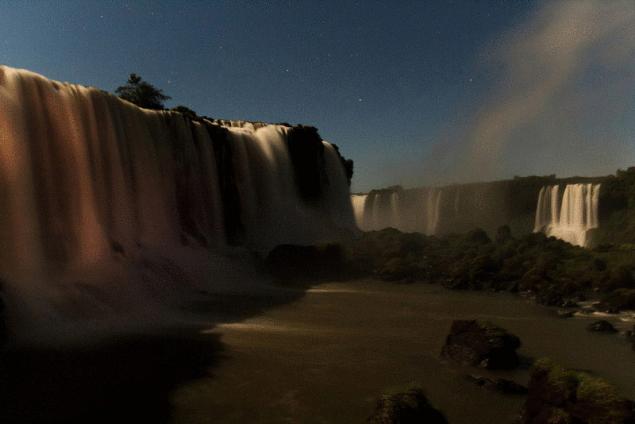
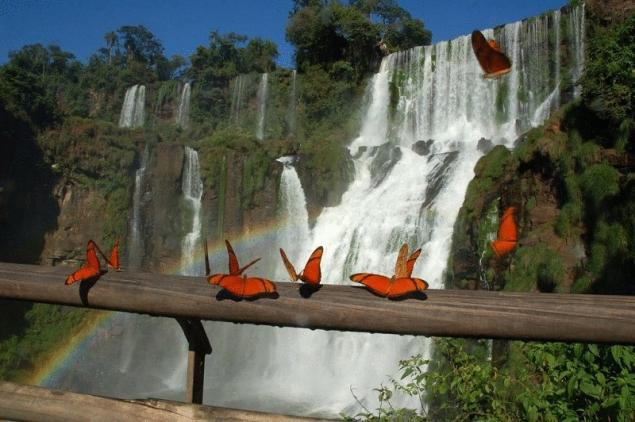
Original partitions between the waterfalls serve multiple Islands. They are connected by bridges, which allow a better view of all the cascading streams.
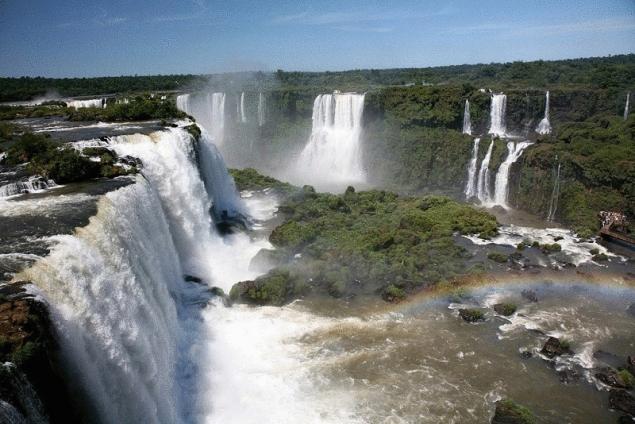
Iguazu falls is one of the most popular attractions in South America. Every year to see this wonder of the world attracts around 1.5-2 million people. For tourists there are special observation platforms, paved roads and Hiking trails, dozens of campsites and hotels. Most of the falls are located in Argentina, but the Brazilian side offers a wonderful view of the largest waterfall complex — "devil's Throat". On site iguaçu national parks are where you can observe wildlife. Toucan:
Flamingo:
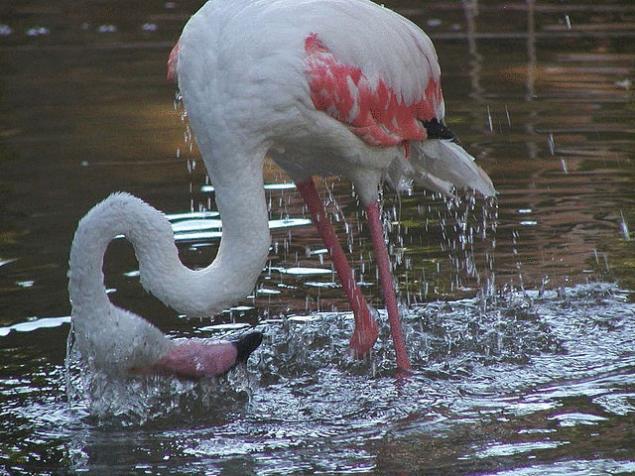
The coati:
Iguanas:

By the rivers Parana and Iguazu boat cruises. You can visit one of the largest hydroelectric power plants in the world – the Itaipu dam. In the vicinity of the falls international airport is Cataratas del iguazú – an Argentine airport, which welcomes tourists wishing to visit this attraction.
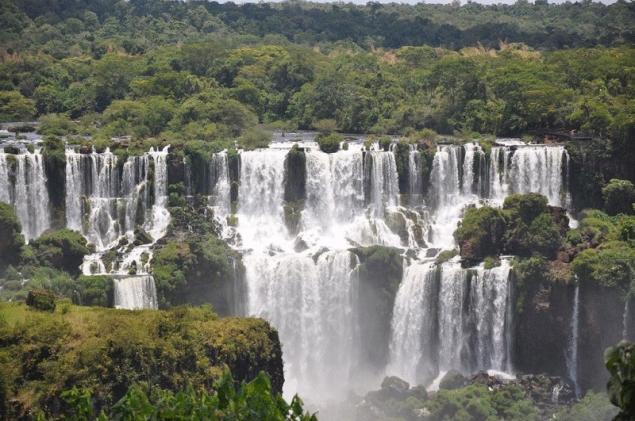

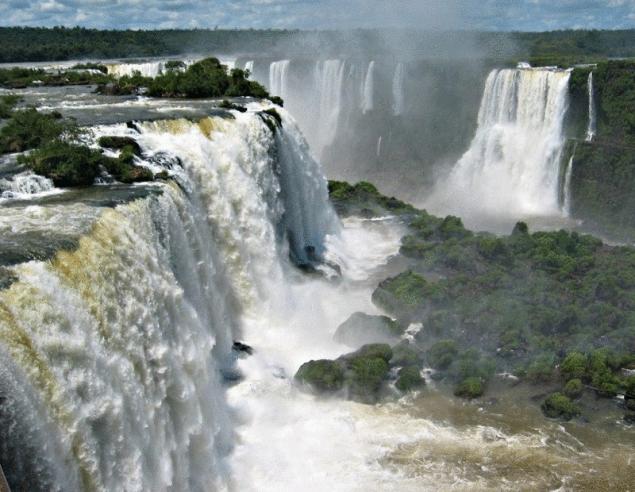
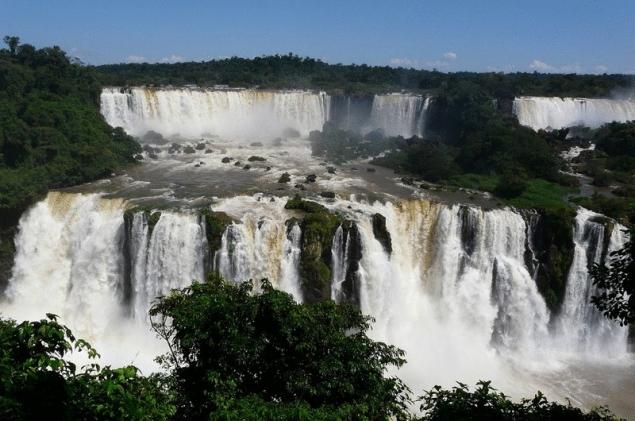
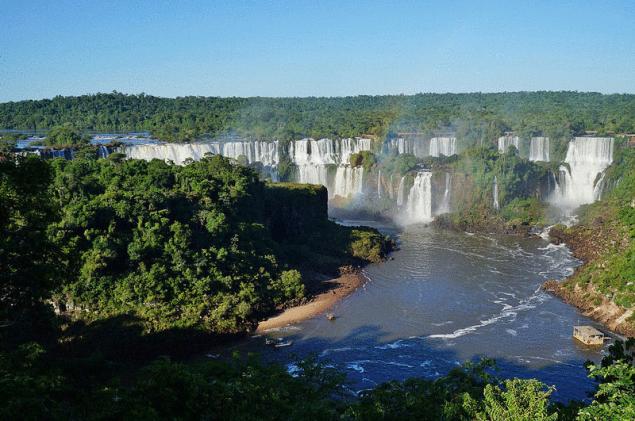
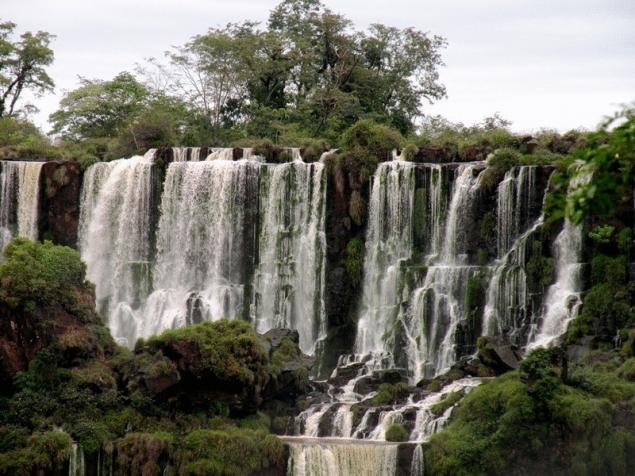
Source: udivitelno.com

At the world competition, held on 11 November 2011, Iguazu was awarded the title of one of the seven natural wonders of the world.

The falls were formed after a strong volcanic eruption, which in the ground formed a large crevice. Age of basalt deposits, formed due to solidification of lava that is about 130-140 million years.

The name of the waterfalls, Iguacu (Iguazu) – comes from two words of the Guarani language, which means “big water”.

The first inhabitants of these territories are considered to be tribes, kaingang and Guarani, this is confirmed by the archaeological objects found in the area. Europeans learned about the majestic waterfalls by Spanish Conquistador Cabeza de Vaca who was the first to set foot on this land, where we saw a fascinating natural creation. It happened in 1541, when the Spaniard travelled through the South American jungle, upstream of the paraná river, in search of the famed treasures of the mythical country of El Dorado.

Different tribes living in these places, legends associated with the emergence of the Iguazu falls. One of them says that God chose as the chosen one, the beautiful aboriginal Naipu, but she did not share his feelings, and loved another, with whom he sailed away from these places in a canoe. God was so angry that cut the river, creating many waterfalls, condemning the star-crossed lovers to an eternal fall.

The Iguazu waterfalls are formed near the place where the eponymous river, taking their sources near the Atlantic coast of Brazil, merges with the Parana river. Rattling the flows extend along the flow of the river almost 3 kilometers. Falling off a cliff, the water falls into the basin, which lies 82 meters below, but the height of most of the waterfalls is about 60 meters. The largest waterfall complex – “devil's Throat” is a horseshoe-shaped cliff with a length of 700 and a width of 150 meters:

This waterfall serves as a natural border between Argentina and Brazil. The rocky terrain between waterfalls, lush diverse vegetation.

Top view from the Brazilian side:


During the rainy season from November to March in the local area receives about 2000 mm of precipitation. In the period of the dry season when the water level in the river Iguazu is significantly reduced, instead of a continuous ridge jets are formed two separate falls, the width of each of which is about 730 meters. After approximately forty years of a powerful waterfall dries up, turning into a basalt ledge. In 1978 a period of severe drought, the river began to dry up, resulting in Iguazu idle for a month.

In addition to the powerful beauty themselves Iguazu falls, here you can see another beautiful sight – a shimmering rainbow, which varies depending on the position of the sun and the height of the waterfall. During the full moon, when the air and water mist over the falls night rainbow is formed.


Original partitions between the waterfalls serve multiple Islands. They are connected by bridges, which allow a better view of all the cascading streams.

Iguazu falls is one of the most popular attractions in South America. Every year to see this wonder of the world attracts around 1.5-2 million people. For tourists there are special observation platforms, paved roads and Hiking trails, dozens of campsites and hotels. Most of the falls are located in Argentina, but the Brazilian side offers a wonderful view of the largest waterfall complex — "devil's Throat". On site iguaçu national parks are where you can observe wildlife. Toucan:

Flamingo:

The coati:

Iguanas:

By the rivers Parana and Iguazu boat cruises. You can visit one of the largest hydroelectric power plants in the world – the Itaipu dam. In the vicinity of the falls international airport is Cataratas del iguazú – an Argentine airport, which welcomes tourists wishing to visit this attraction.






Source: udivitelno.com
Least weasel is the smallest carnivore on the planet
Engineers have proposed a passive method of cooling solar panels


